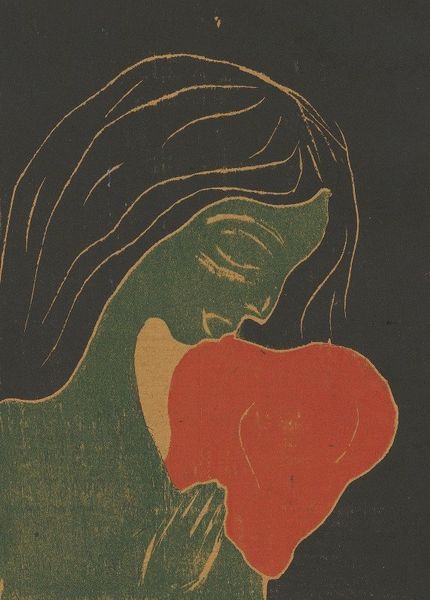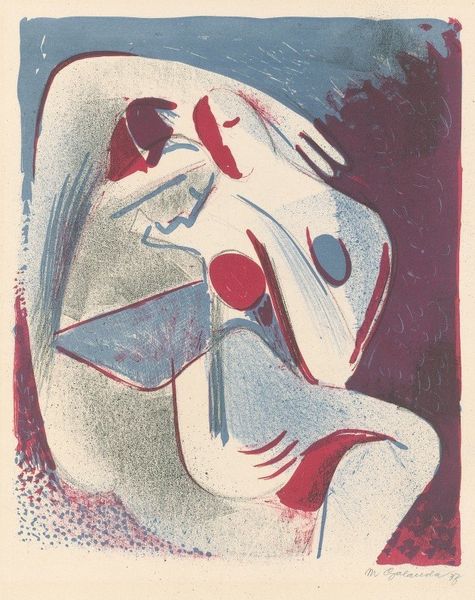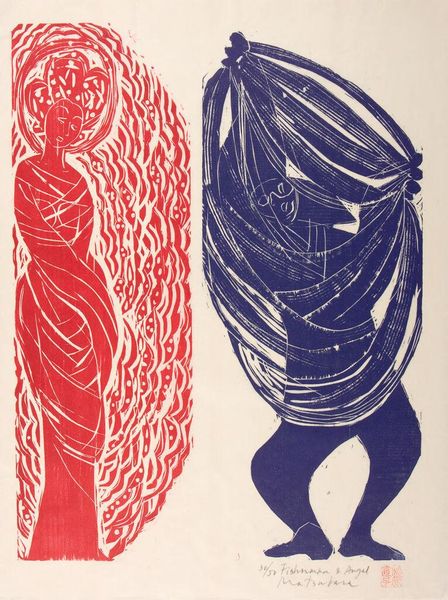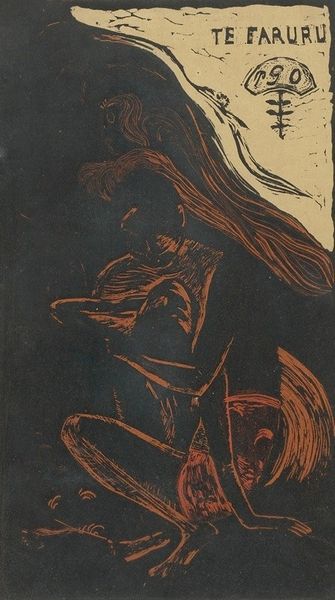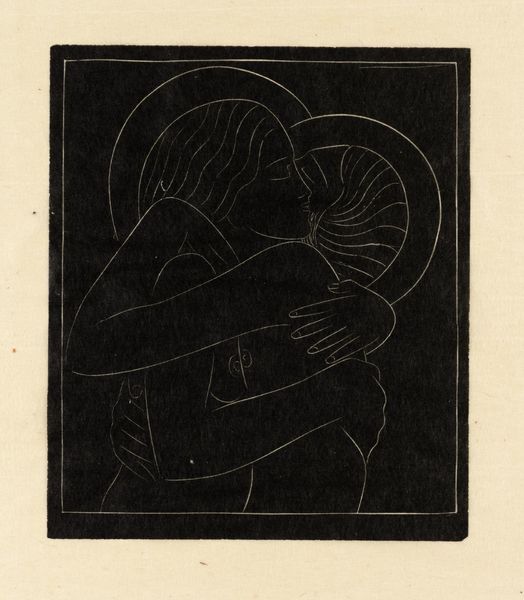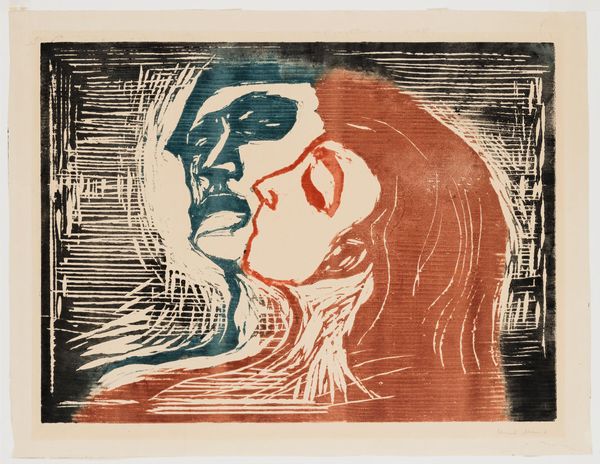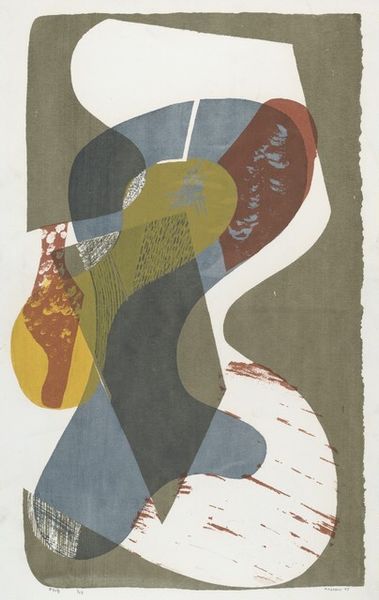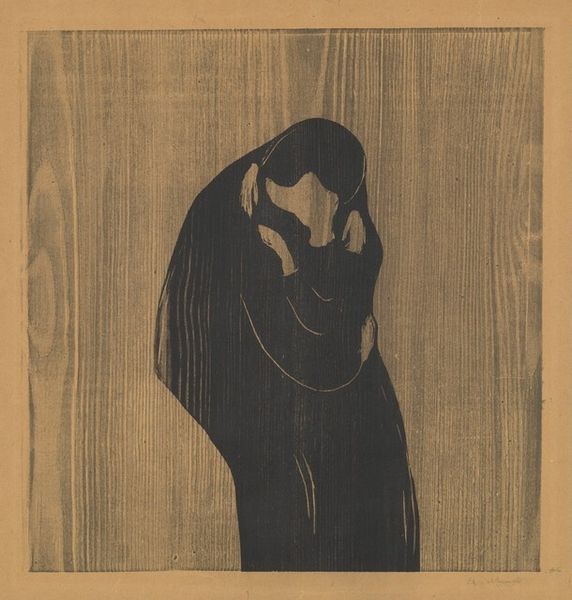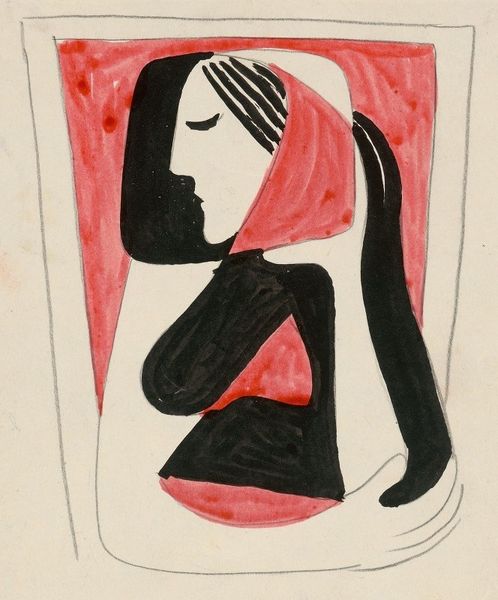
print, linocut
# print
#
linocut
#
caricature
#
figuration
#
form
#
linocut print
#
expressionism
#
line
#
symbolism
Dimensions: image: 24.9 x 19.1 cm (9 13/16 x 7 1/2 in.) sheet: 40.4 x 33.9 cm (15 7/8 x 13 3/8 in.)
Copyright: National Gallery of Art: CC0 1.0
Curator: This is Edvard Munch’s "The Heart," a linocut print from 1898-99. What strikes you about it? Editor: A heavy melancholia. The stark black background and downward gaze lend a sense of resigned sorrow, almost alienation, amplified by the contrast with the vivid red heart. It feels deeply internalized. Curator: Indeed. Munch masterfully uses line and form to convey emotion. Consider the simplification of the woman’s face, the elongated lines of her hair, which cascade like tears. These visual elements contribute to the overall sense of grief. Semiotically, the stark color blocking emphasizes this opposition and detachment. Editor: Absolutely, but I read that emotional intensity as tied to the socio-political climate of the late 19th century. The image reflects not just personal pain but a broader feeling of existential angst, particularly amongst women navigating restrictive social roles. Her downturned face can also reflect societal constraints, almost symbolic imprisonment within her gender. Curator: Perhaps, yet Munch’s work always emphasizes universal experience. Observe how the form is rendered – nearly flattened to emphasize flatness, echoing trends in art that eschewed three-dimensional representation at the time. It isn’t merely about expressing social woes but reconfiguring space and representation. Editor: But that formal strategy, stripping down the image, serves to heighten the raw, vulnerable emotion on display. To ignore the historical context – Munch's own struggles with mental health, and his fraught relationships – would diminish its power to connect with contemporary anxieties around identity, body image, and mental wellbeing. Curator: I see your point. Munch expertly merges the aesthetic with the emotional, challenging how art can viscerally touch our intellect and being. Editor: Agreed. "The Heart" isn’t just formally innovative. It reflects something universally painful about the human experience and touches beyond that, acting almost as a symbol of societal impact of emotions onto one’s wellbeing. Curator: Ultimately, this linocut stands as an emotional landscape of formal excellence. Editor: And hopefully encourages empathy.
Comments
No comments
Be the first to comment and join the conversation on the ultimate creative platform.
